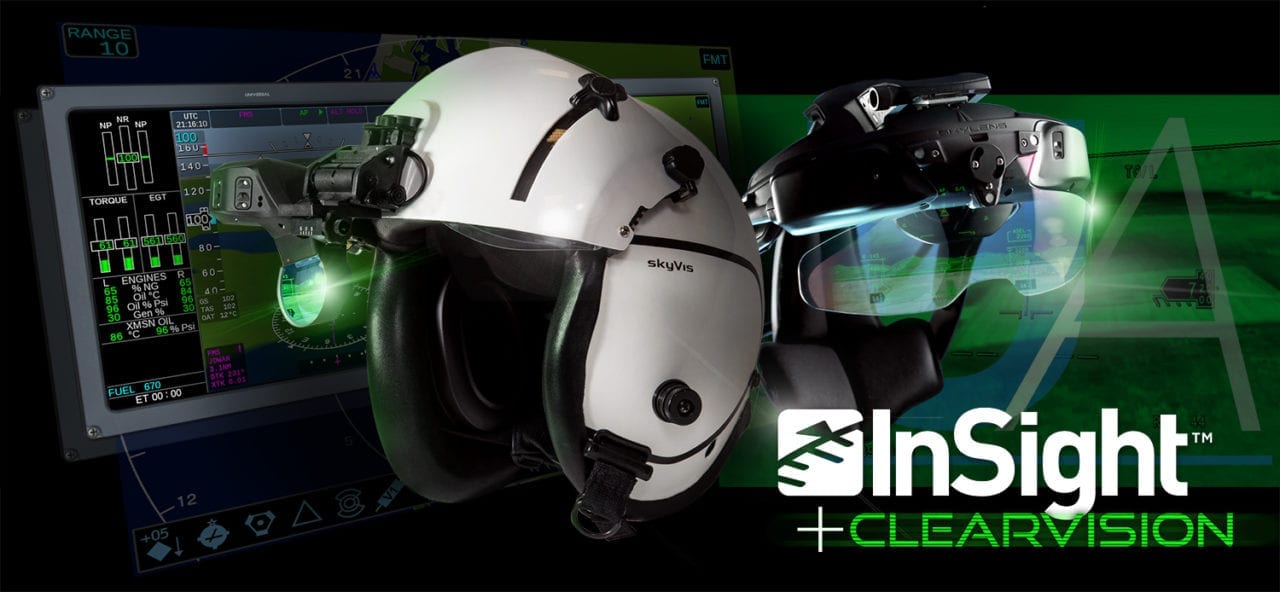
UA’s InSight + ClearVision solution. (Universal Avionics)
Ed. note: Elbit-owned Universal Avionics is focusing on the rotorcraft market, bringing combined vision systems to helicopter pilots through helmet-mounted and windshield displays. This piece from sister site Rotor & Wing International details UA’s new enhanced-vision cockpit technology.
Universal Avionics has unveiled a new enhanced flight vision system (EFVS) flight deck designed to support nighttime helicopter operation and challenging weather conditions.
UA is pitching a flight deck with its InSight display system combined with either its Heli-ClearVision SkyVis helmet-mounted display or SkyLens head-wearable display working together to provide pilots enhanced vision.
“The overall solution offers emergency medical services operation, law enforcement, and search-and-rescue operators a new level of operability while enhancing the safety of the crew and passengers,” said Dror Yahav, vice president of commercial aviation at Elbit Systems, UA’s parent company.
A fully-interactive demonstration rig of the EFVS flight deck will be on display at UA’s booth throughout Heli-Expo, showcasing unique scenarios such as the creation of a “mark on target” waypoint using its line-of-sight cursor function.
UA is continuing its research partnership with the FAA to develop regulations to support the use of EFVS and enhanced helicopter vision systems for rotorcraft.

UA’s enhanced flight vision system. (Universal Avionics)
The FAA is considering the use of UA’s Heli-ClearVision as a representative EHVS to improve helicopter safety and provide operational benefit during day, night and low-visibility conditions, according to the company.
Testing hardware was fully integrated into the FAA’s Sikorsky S-76 at William J. Hughes Technical Center and training and familiarization flights were conducted with FAA test pilots, followed by the commencement of data collection flight tests.
The next phase of testing is planned for early 2019 and will include the use of UA’s SkyLens and SkyVis technology, capable of displaying primary flight display symbology, conformal information, synthetic vision system (SVS), enhanced vision system (EVS) with an EVS-4000 multispectral camera and combined vision system (CVS).
“This research allows us to jointly investigate EHVS technology through both head-worn and helmet-mounted displays coupled with CVS sensors,” said Cliff Johnson, FAA research program manager for helicopter safety. “The research directly supports the FAA’s ongoing aviation safety initiatives to develop criteria for helicopter operations in low-visibility environments.”
The flight test program will assist the FAA with policy and rulemaking efforts to allow for the use of EHVS technologies on helicopters operating to and from helipads, heliports and landing zones.